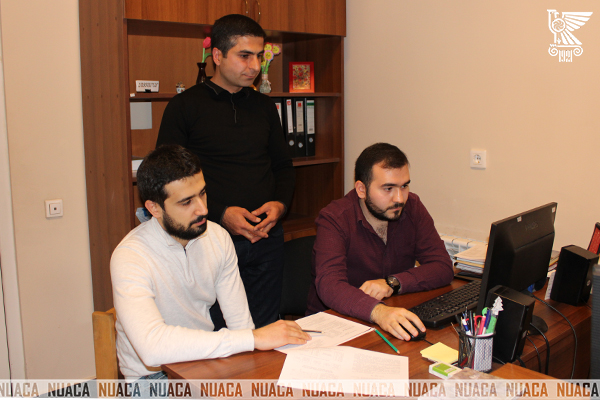


The scientific topic “Design and Preparation of Composite Concrete Protective Structures of New Generation with Additives of Basalt Fibers and Carbon Nanostructures” submitted by NUACA has been financed as a result of the contest for the support of dual-purpose programs within the framework of contractual (thematic) funding of scientific and scientific-technical activities announced by the Science Committee.
The supervisor of the topic on designing and preparing composite concrete protective structures of new generation with additives of basalt fibers and carbon nanostructures is NUACA Researcher, Associate Professor at the Chair of Production Technology of Construction Materials, Items and Structures, PhD in Technical Sciences, Avetik Arzumanyan.
The group involves Amalya Karapetyan, NUACA Researcher, Associate Professor at the Chair of Production Technology of Construction Materials, Items and Structures, PhD in Technical Sciences, Nelly Muradyan, Head of the Scientific Experimental Laboratory of Construction Materials and Items, Vahe Vardanyan, a master’s graduate of the Chair of Construction Structures, and Tigran Ter-Poghosyan, a full-time PhD applicant.
The supervisor of the topic A. Arzumanyan states: “The project is dedicated to the design and preparation of composites improved with the additives of basalt fibers and carbon and metal-carbon nanostructures, composite concrete reinforced with basalt-plastic reinforcement, as well as protective structures with layers of thick fabric of basalt fibers. There is a strong emphasis on material and technical base capabilities of Armenia, using only local raw materials and products.”
“After appearing in the list of winners of the contest, we prepared the necessary compositions of concrete mixtures; we have already prepared the first batch for testing; of course corrections and changes are being made in the process. Upon achieving a positive result, the appropriate equipment will be obtained and we will be able to conduct the experiments. I hope that we will carry out the work in due time,” states A. Karapetyan.
“As the topic concerns protective structures, it may not be possible to publish articles in terms of privacy. Initially we have to get concrete, which will have the appropriate properties, after that we have to reinforce it; a clear structure will be prepared on a smaller scale, and field testing will be carried out. The structure must be tested in the field, the impact strength and properties must be determined without laboratory equipment,” said A. Arzumanyan.
For the PhD applicant Tigran Ter-Poghosyan, the project provides an opportunity to make the first attempts to prepare scientific materials, to carry out research. He says: “Structures will be calculated and designed, which will be prepared through computer software, taking into account the non-linearity of the material. In general, the buildings are mostly in a static state in the calculations, but in this case we have an impact, so the calculations must be carried out by software that is not used in the design of industrial or civil buildings. More specific professional software is necessary, which will be used during the implementation of this program.”
In the conversation with us A. Arzumanyan said that the application would give them an opportunity to acquire equipment of new generation, which would allow to determine the amount of energy absorbed and resistance to impact, and in case of bending – deformation. For the parameters that will not be possible to determine in these conditions, we will have the opportunity to use the services of the relevant institutes of the National Academy of Sciences.
“The program is approved for a preliminary period of two years; annual reports will be submitted to the Science Committee on the implemented works,” informed A. Arzumanyan.